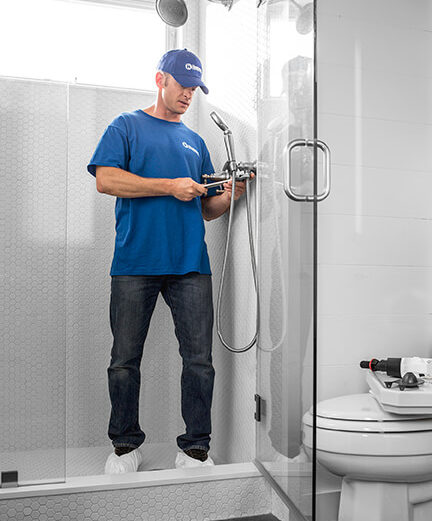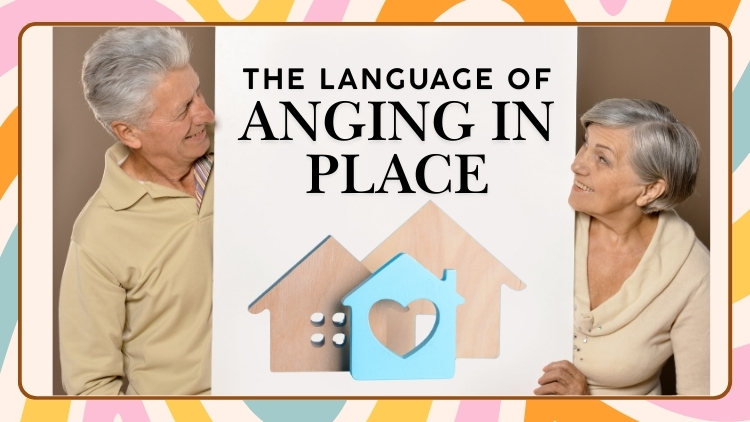We offer a wide range of services for that fresh look, or just maintenance or updates to keep your home functioning and safe. Regardless of the size of the job, we have a craftsman that can tackle it. We offer a wide range of services for that fresh look, or just maintenance or updates to keep your home functioning and safe. Regardless of the size of the job, we have a craftsman that can tackle it.

Aging in Place / November 24, 2024

Imagine being able to stay in the home you love, surrounded by familiar comforts and cherished memories, even as you advance in years. This vision of “aging in place” is a deeply personal and appealing goal for many. Yet, achieving this dream requires more than just a desire to remain at home—it demands education, awareness, and a grasp of the complex landscape that surrounds aging in place.
Navigating the aging in place industry can sometimes feel like learning a new language. Understanding aging in place assessments and the many terms used by professionals is key to making informed decisions about home modifications and care needs. Getting familiar with this language is important. In Winnipeg, businesses like Handyman Connection offer valuable resources and guidance, helping you approach the aging process with confidence and clarity.
This guide will delve into the importance of aging in place and highlight the essential terms and concepts you need to know. You’ll gain insights into why understanding aging in place is vital and how knowledge can empower you to make decisions that align with your lifestyle and health needs. By the end of this journey, you’ll be well-equipped to navigate the intricacies of the aging in place industry and take steps toward maintaining your independence in the home you love.
Universal design is about creating environments accessible to all people, regardless of age, disability, or other factors. It’s not just about installing ramps and grab bars; it’s about an inclusive approach to building and modifying homes. When you incorporate universal design, you’re crafting a space that adapts to everyone’s needs, enhancing usability and accessibility. This design philosophy ensures that homes are welcoming to everyone, including those with decreased mobility or other challenges.
When modifying your home, consider integrating universal design into areas like kitchens and bathrooms. For instance, installing adjustable-height countertops can make cooking more accessible. Bathrooms could benefit from walk-in showers and strategically placed grab bars. The idea is to create a seamless living experience where modifications don’t stand out as medical adaptations but rather as enhancements that add to the home’s functionality.
Home modifications are pivotal in enabling residents to remain in their homes safely. As we age, our physical needs change and our homes must reflect this evolution. Making necessary adjustments allows older adults to perform daily activities with ease and reduces the risk of accidents. These changes can be as simple as adding brighter lighting for better visibility or more complex, like lowering sinks and counters for wheelchair access.
There is a range of modifications to consider when planning for aging in place. Bathroom renovations often include the installation of non-slip flooring and walk-in tubs to prevent falls. Kitchens might need counters at varying heights and easy-to-reach cabinets. Furthermore, stairlifts or ramps can be critical for those with mobility challenges, making every part of the home accessible.
Recognizing accessible features is crucial for homeowners aiming to create an inclusive environment. These features aren’t only beneficial for older adults but can enhance the quality of life for all occupants. They help eliminate barriers that can cause difficulties in moving around the house, allowing everyone to enjoy freedom within their own spaces.
Accessible features vary widely, from grab bars in bathrooms to non-slip flooring throughout the home. Lever handles make doors easier to open for those with arthritis. Similarly, motion-sensor lights can provide illumination automatically, reducing the risk of trips and falls. Each feature plays a role in creating a supportive and secure living environment.
Technology is reshaping how we approach aging in place, offering innovative solutions for safety and convenience. Devices such as smart home systems provide voice-controlled automation for lights, thermostats, and even door locks. This shift not only enhances the living experience but also brings peace of mind to both residents and their families.
The technologies available today are diverse. Wearable devices can monitor health metrics and alert in case of emergencies, while video doorbells enhance security by allowing homeowners to see who’s at the door without leaving their seats. These tools collectively contribute to a safer, more responsive living environment that adapts to its occupants’ needs.

Retrofitting existing homes is a strategic approach to accommodating changing needs without the expense of moving. It involves updating the current features of a home to meet the demands of aging residents. Retrofitting can be more cost-effective than relocating, allowing individuals to remain in familiar surroundings.
Various retrofitting techniques can be employed to improve a home’s accessibility. Ramps can replace stairs at entrances to make homes wheelchair accessible. Doorways can be widened to accommodate mobility devices. Additionally, kitchen and bathroom fixtures can be replaced with models that offer greater user-friendliness for those with physical limitations.
Creating barrier-free living environments is about removing obstacles that hinder movement and accessibility. This concept focuses on designing spaces where every individual can move freely without encountering impediments. Such environments promote independence and enhance the quality of life for residents.
Features that facilitate barrier-free living include roll-in showers that eliminate the need for stepping over a threshold and wide doorways that accommodate wheelchairs. Adjustable countertops in the kitchen can make meal preparation accessible to everyone. Each feature is designed to reduce physical strain and enhance accessibility.
Livable communities play a critical role in supporting aging in place. These communities are designed to offer a range of services and amenities that cater to the needs of older adults, from healthcare to social activities. They provide a supportive network that enhances residents’ well-being and quality of life.
Livable communities often feature walkable neighbourhoods, accessible public transportation, and community centers that host activities and events. These features not only foster a sense of belonging but also encourage active living and social engagement among residents.
Inter-dependent living arrangements are vital for those who wish to age in place with support. These arrangements balance independence with assistance, allowing individuals to maintain autonomy while benefiting from shared resources and companionship.
Inter-dependent living can take several forms, from shared housing with other older adults to cohabitating with family members or caregivers. These arrangements provide mutual support, whether through shared chores or companionship, enhancing the overall living experience.
Home care services are often essential for individuals wishing to age in place. These services provide crucial support, from medical care to daily assistance, enabling residents to maintain their independence while receiving necessary care.
Home care services range from healthcare services provided by nurses to personal care assistance with daily activities such as bathing and meal preparation. Senior adult centers offer supervised activities and socialization, providing a structured environment for older adults.
Pursuing certification in aging in place demonstrates a commitment to expertise in this field. Certifications equip professionals with the knowledge needed to design and modify homes that accommodate the needs of older adults effectively.
Various certifications are available, such as the Certified Aging-in-Place Specialist (CAPS) and the Certified Environmental Access Consultant (CEAC). These programs cover essential topics, including home modifications, safety assessments, and barrier-free design.
Aging in place is a vital aspect of maintaining independence and quality of life as we grow older. For residents of Winnipeg, understanding aging in place means more than just staying in your home; it involves adapting your living environment to meet your evolving needs. The language of aging in place encompasses a myriad of terms and concepts, from retrofitting to barrier-free living, each contributing to creating a home that facilitates safety, accessibility, and comfort.
The aging in place industry is complex and multifaceted, requiring a solid understanding of various elements to navigate effectively. An aging in place assessment considers factors like mobility, accessibility, and safety to outline necessary home modifications. Terms like “livable communities,” “interdependent living,” and “home care services” each carry specific implications for how one can successfully age in place. Thus, familiarizing yourself with this language is crucial for making informed decisions about your home and care.
Handyman Connection is dedicated to helping homeowners understand and implement the principles of aging in place. This guide will delve into the essential components, from technological advancements to barrier-free designs, providing a comprehensive understanding of how to prepare your home for the future. Join us on this journey to demystify the terminology and concepts essential for aging in place in Winnipeg.